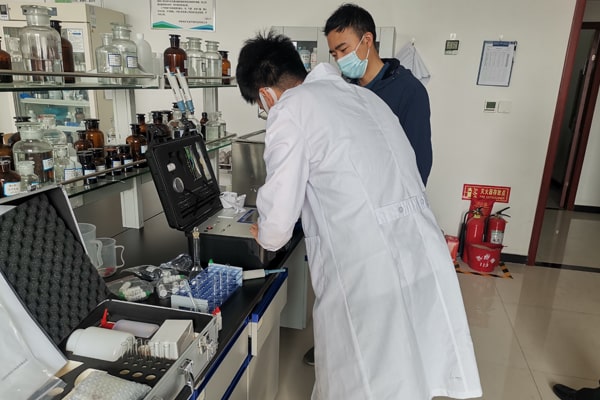Henan Province Puyang Ecological Environment Monitoring Center Purchases Hengmei Soil Testing Instrument.
Article Source: Hengmei Technology Release time:2024-11-07 14:53:09
In 2021, the Puyang Ecological Environment Monitoring Center successfully purchased 3 units of HM-ZSE soil heavy metal detectors from Shandong Hengmei Electronic Technology Co., Ltd. for ecological environment testing.

**Principle of Soil Heavy Metal Detector:
(1) After digestion, all forms of heavy metals (including mercury, lead, chromium, iron, aluminum, zinc, manganese, copper, etc.) are converted into ionic states. After adding relevant testing reagents, the color change of the solution is proportional to the content of heavy metals within a certain concentration ranges, obeying the Lambert-Beer Law. The instrument then measures the content values and compares them with the national standards for safe limits of agricultural product quality to determine the heavy metal content in the samples.
(2) Detection principles and standards for each heavy metal:
1. Detection principle and standard for heavy metal mercury:
Uses the national standard (GB/T5009.11-2003) and the borohydride reduction colorimetric method. After digestion, under acidic conditions, mercury ions are reduced to the trivalent state by potassium borohydride, forming a yellow complex that is absorbed in the solution, and measured by the instrument to determine the mercury content.
2. Detection principle and standard for heavy metal lead:
Uses the national standard (GB/T5009.12-2003) and the dithizone colorimetric method. After digestion, under weakly alkaline conditions, lead ions form a red complex with dithizone, dissolved in chloroform, and measured colorimetrically.
3. Detection principle and standard for heavy metal chromium:
After digestion, under the presence of divalent manganese, chromium ions react with diphenylcarbazone to form a purple complex, the color depth of the complex is proportional to the content of hexavalent chromium, measured colorimetrically to determine chromium content.
4. Detection principle and standard for heavy metal arsenic:
Uses the national standard (GB/T5009.15-2003) and the colorimetric method. After digestion, under alkaline conditions, arsenic ions form a red complex with 6-nitro-benzooxazinophenol, dissolved in chloroform, and measured colorimetrically.
5. Detection principle and standard for heavy metal mercury:
Uses the national standard (GB/T500.17-2003) and the dithizone colorimetric method. After digestion, under acidic conditions, mercury ions form an orange-red complex with dithizone, dissolved in chloroform, and measured colorimetrically.
Address of this article:https://www.kjhm.net/case/682.html
 Related News
Related News
-
29 / 2024-09
Fatty Acid Value Meter: A New Tool For Grain Quality Testing.
Learn more
-
09 / 2024-09
The Role Of Soil Respirometer In Agricultural Management.
Learn more
-
26 / 2024-11
Microwave digestion instrument: an efficient and environmentally friendly sample pretreatment tool.
Learn more
-
29 / 2024-10
Unleash the Power of Soil Respiration Analysis with HM-TH2.
Learn more



 Current
Location:
Current
Location:





